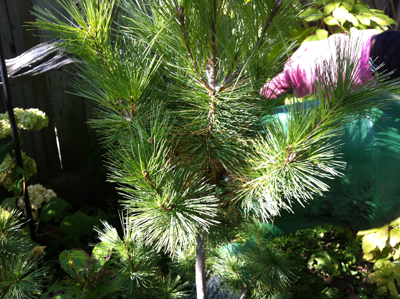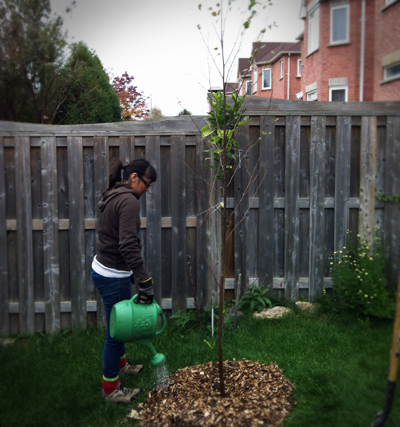It wasn’t my first time planting, but it was still a nice change of scenery from the office. I warmly welcomed all of the familiar motions - digging, placing, packing, mulching (in a donut-shape), and finally watering a young tree in its new home.
But the disruptions in this routine - no parking for a cube truck in more populated areas, a driver’s exercise in frustration over downtown traffic, my inability to cut deep, large tree roots while digging (which Andrea unfortunately bore witness to several times!), and a planter’s battle of physical strength versus nature – were not as welcomed. However, resigned to the challenges presented by planting, I’d like to think I got better at it after every long day.

The type of planting we do at LEAF may be quite different from what Joe did in northeastern Ontario, but I think we ultimately share the same goal: aiding the successful growth of a tree in its new home. There is great satisfaction in seeing a tree transform an area (such as an urban neighbourhood) for the better, helping our urban forest amidst cities and towns with limited land but no shortage of development.
Meeting excited homeowners who express dedication to caring for the trees brightens even the most draining aspects of the planting experience. To me, these accounts suggest people’s attitudes toward natural spaces in cities appear to be changing. People seem more aware of the environmental and health benefits a thriving urban forest provides.
These sentiments were further validated when, back in the office, Melissa shared with us that the number one reason our program’s participants planted trees this fall was to help the environment. Amazing! Our education and stewardship efforts are fruitful, an inspiring confirmation that my goals to work and engage in tree care and education will be worth pursuing.

I hope I can come back later on and see how the trees we planted this fall fare, like Joe did in his article – if they grow from the leafless branched saplings that they were to the beautiful, mature trees that they are meant to be. Will they change the look of the urban neighbourhood? Will they survive to contribute to our urban forest? Will the locals benefit from the incremental change in canopy?
I can’t predict the answers to these questions, but I know it truly will be a sight to see. And I know LEAF will find these answers as they continue to do follow up visits into the future. In the meantime I’ll wait patiently for the spring, saving my strength for the next time I go out to plant.
